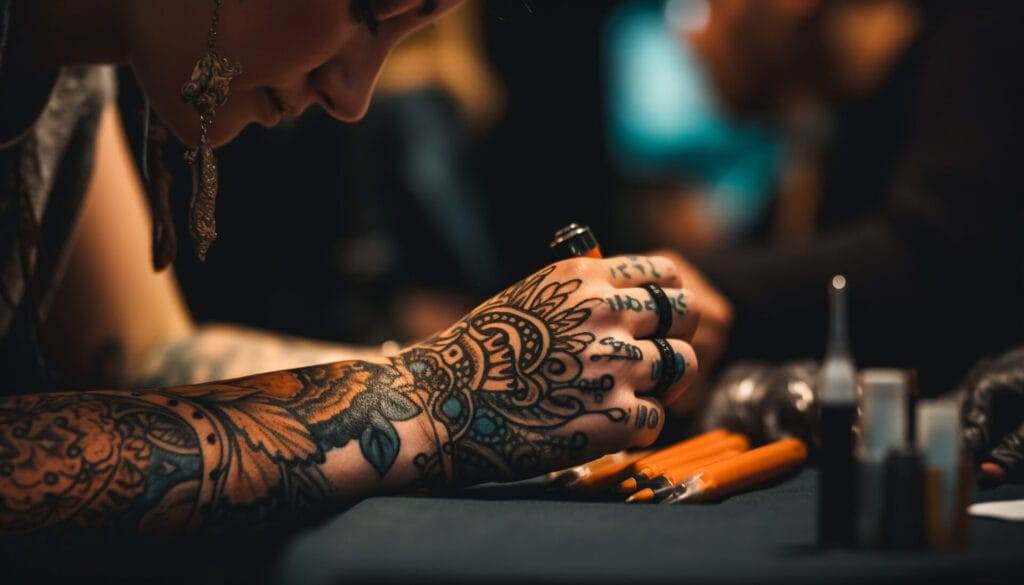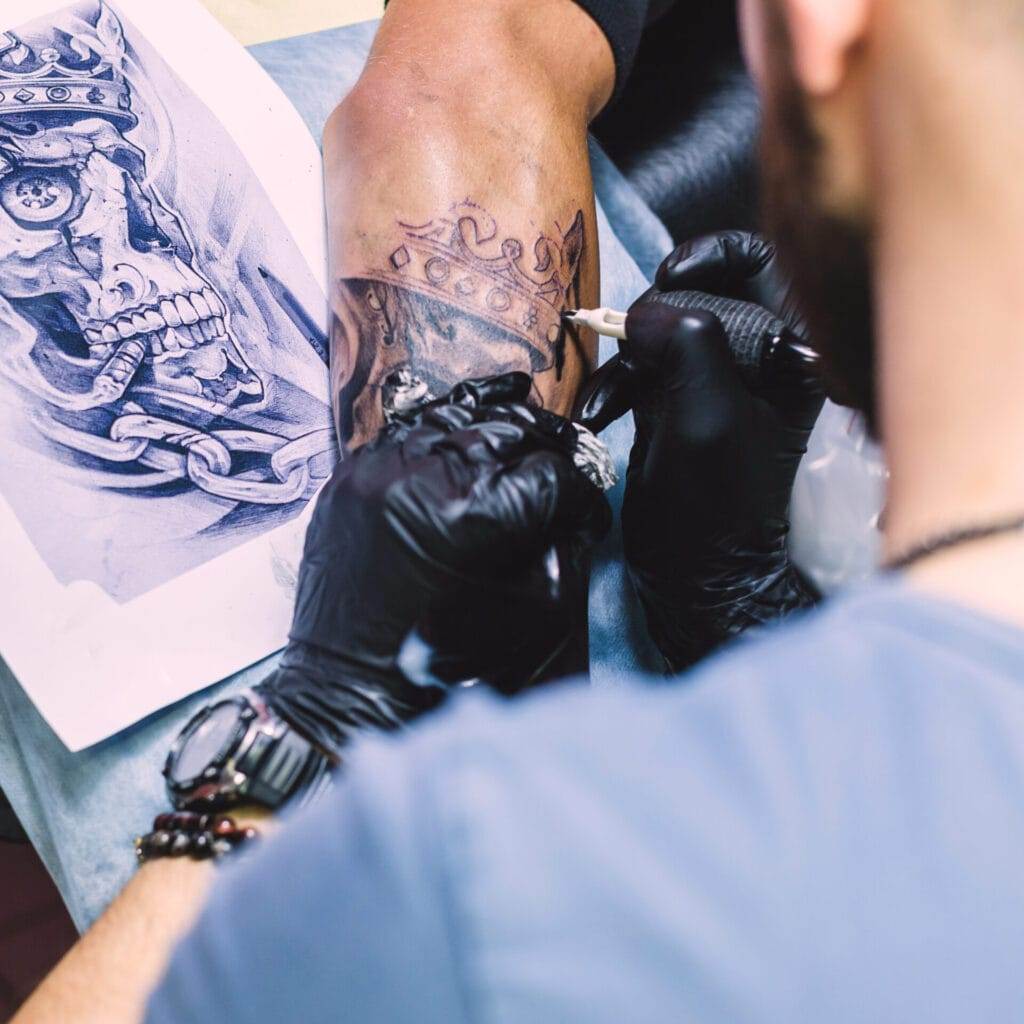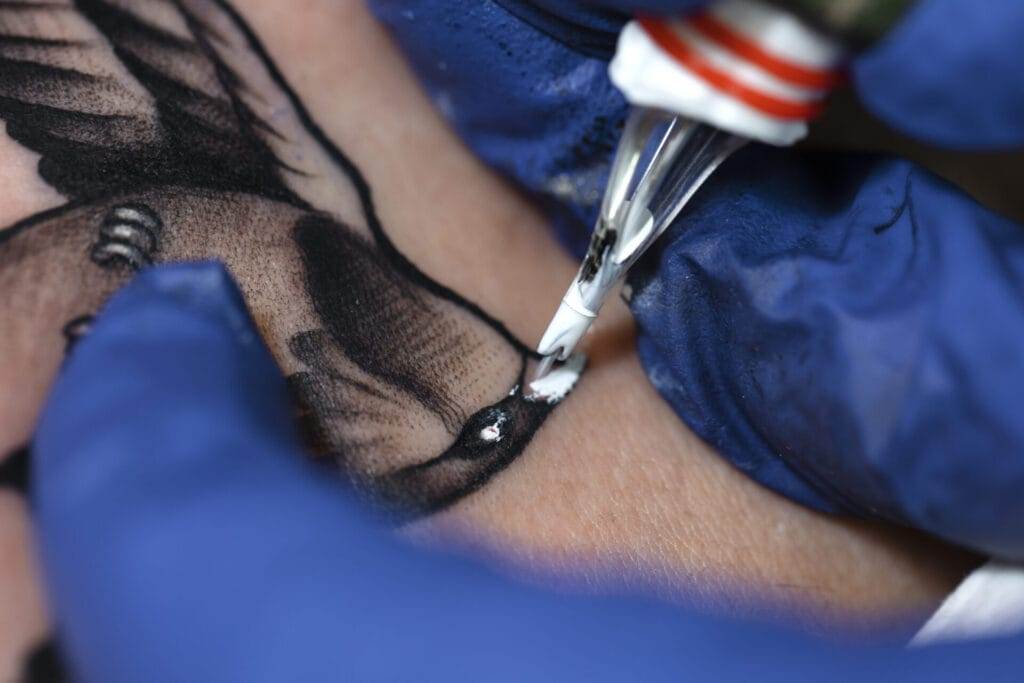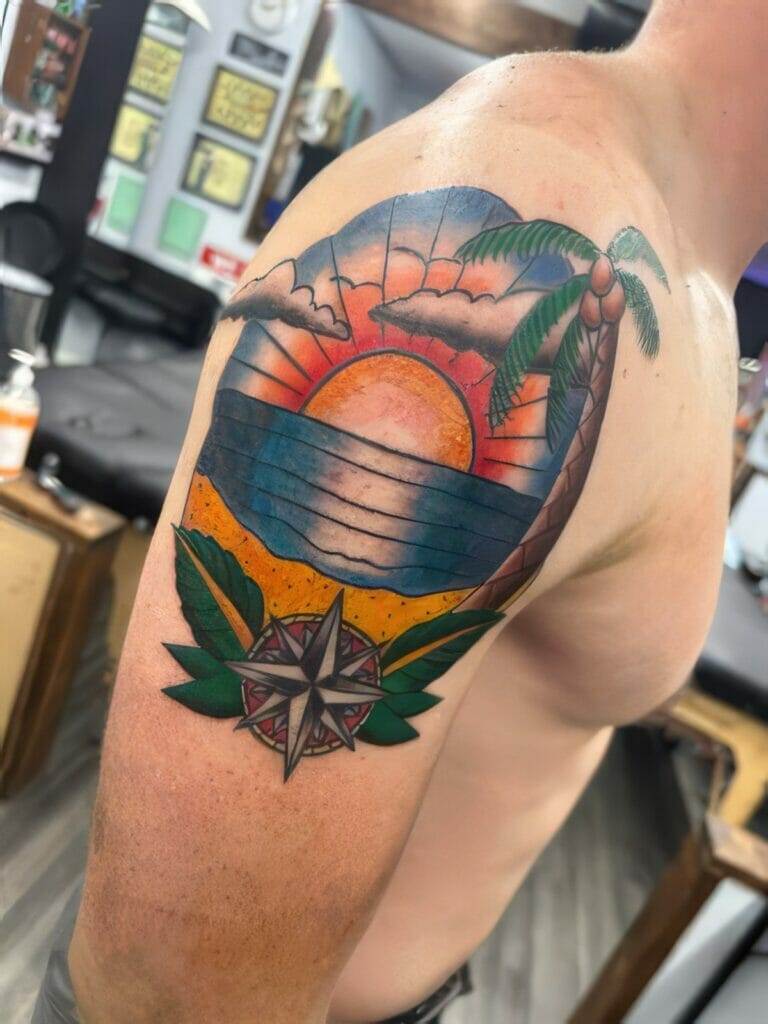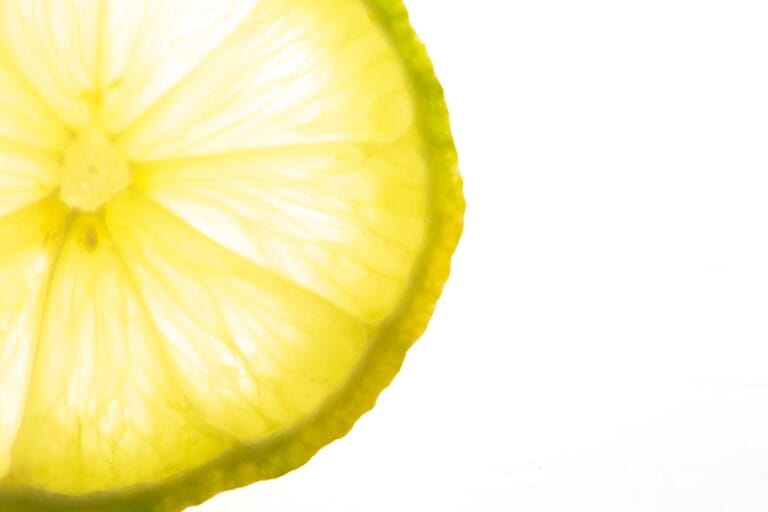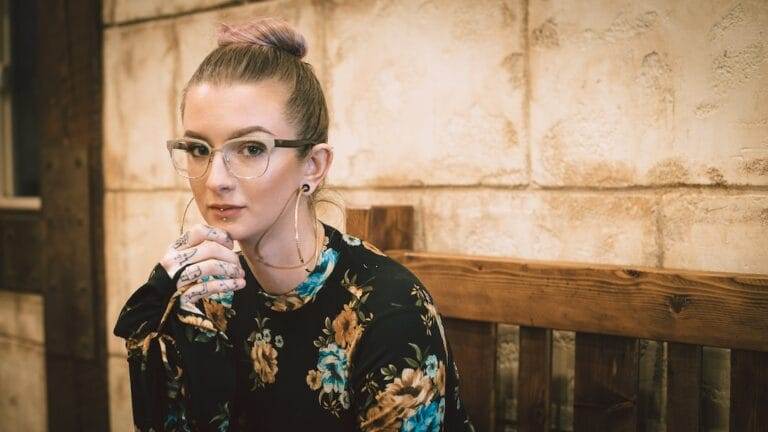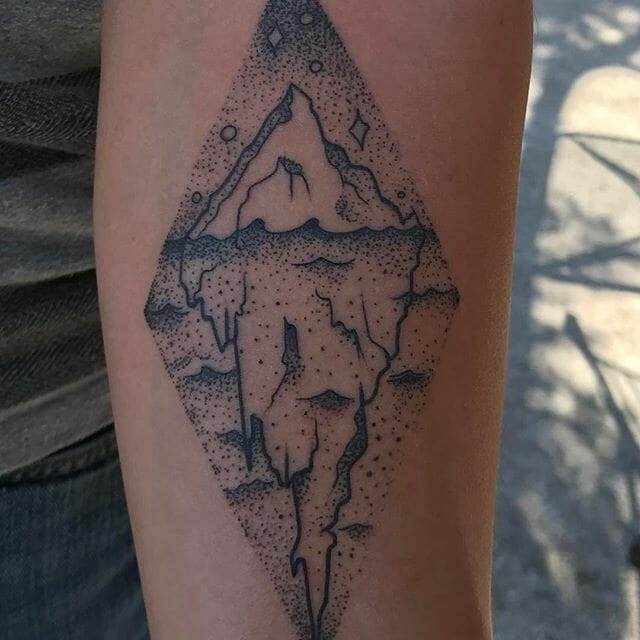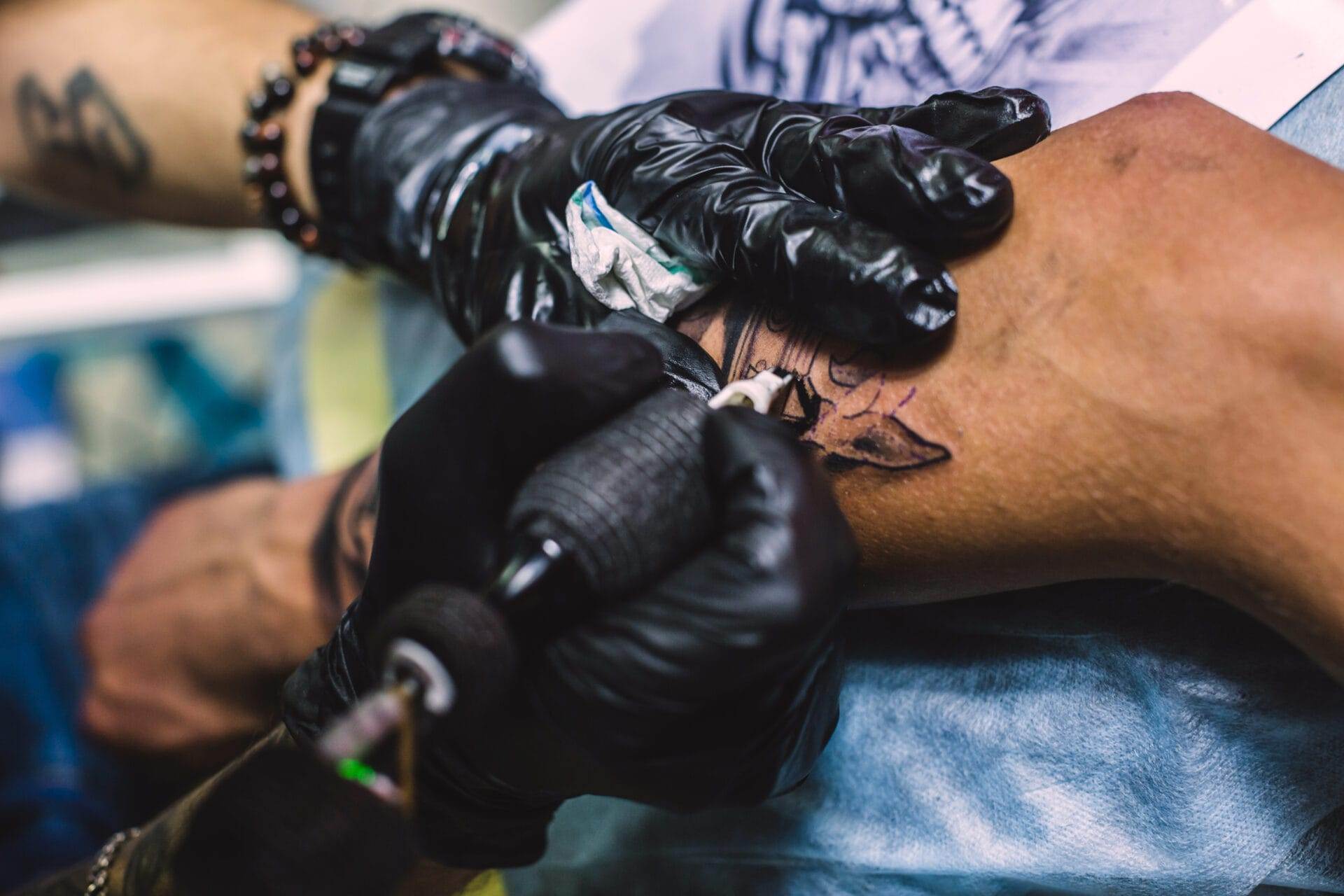
Tattoos have become increasingly popular in recent years, with more and more people choosing to get inked. However, as trends change and personal preferences evolve, there may come a time when someone wants to cover up an existing tattoo. Whether it’s because of a change in taste, a desire to remove a reminder of the past, or the need to conform to professional standards, tattoo cover-up services offer a solution for those looking to transform their inked canvas.
Feeling comfortable in one’s own skin is essential for overall well-being and self-confidence. For some individuals, having a visible tattoo can be a source of discomfort or even hinder their personal or professional lives. Tattoo cover-up services provide an opportunity to reclaim control over one’s appearance and create a new canvas that aligns with their current preferences and lifestyle.
The Science of Tattoo Removal: Why Cover-Up is a Better Option
Tattoo removal is often considered as an alternative to cover-up, but it’s important to understand the limitations and drawbacks of this process. Tattoo removal typically involves laser treatments that break down the ink particles in the skin, allowing the body’s immune system to gradually eliminate them. However, complete removal of a tattoo can be a lengthy and expensive process, requiring multiple sessions over several months or even years.
In addition to the time and cost involved, tattoo removal may not always yield satisfactory results. Some colors are more difficult to remove than others, and certain tattoos may leave behind scarring or pigmentation changes. This is where tattoo cover-up becomes a better option for many individuals. By working with an experienced tattoo artist, it is possible to transform an existing tattoo into a new design that effectively conceals the original ink.
Finding the Right Tattoo Artist for Cover-Up Services
When it comes to tattoo cover-up services, finding the right artist is crucial. Covering up an existing tattoo requires skill, creativity, and an understanding of how to work with different colors and designs. It’s important to choose an artist who has experience in cover-up work and can provide examples of their previous work.
One way to find the right artist is by asking for recommendations from friends or family members who have had successful cover-up tattoos. Additionally, researching local tattoo studios and reading reviews can help narrow down the options. Once a few potential artists have been identified, it’s a good idea to schedule consultations to discuss the cover-up process and see if their style aligns with your vision.
The Consultation Process: What to Expect
During the consultation process, the artist will assess the existing tattoo and discuss potential cover-up options. They will take into consideration factors such as the size, color, and placement of the original tattoo, as well as the client’s preferences for the new design. It’s important to be open and honest during this process, as clear communication between the artist and client is essential for a successful cover-up.
Clients should come prepared with any reference images or ideas they have for the new design. The artist may also ask questions about the client’s lifestyle, profession, and personal style to ensure that the cover-up tattoo is a good fit. This is also an opportunity to ask any questions or address any concerns about the process or aftercare.
Cover-Up Techniques: Exploring Different Options
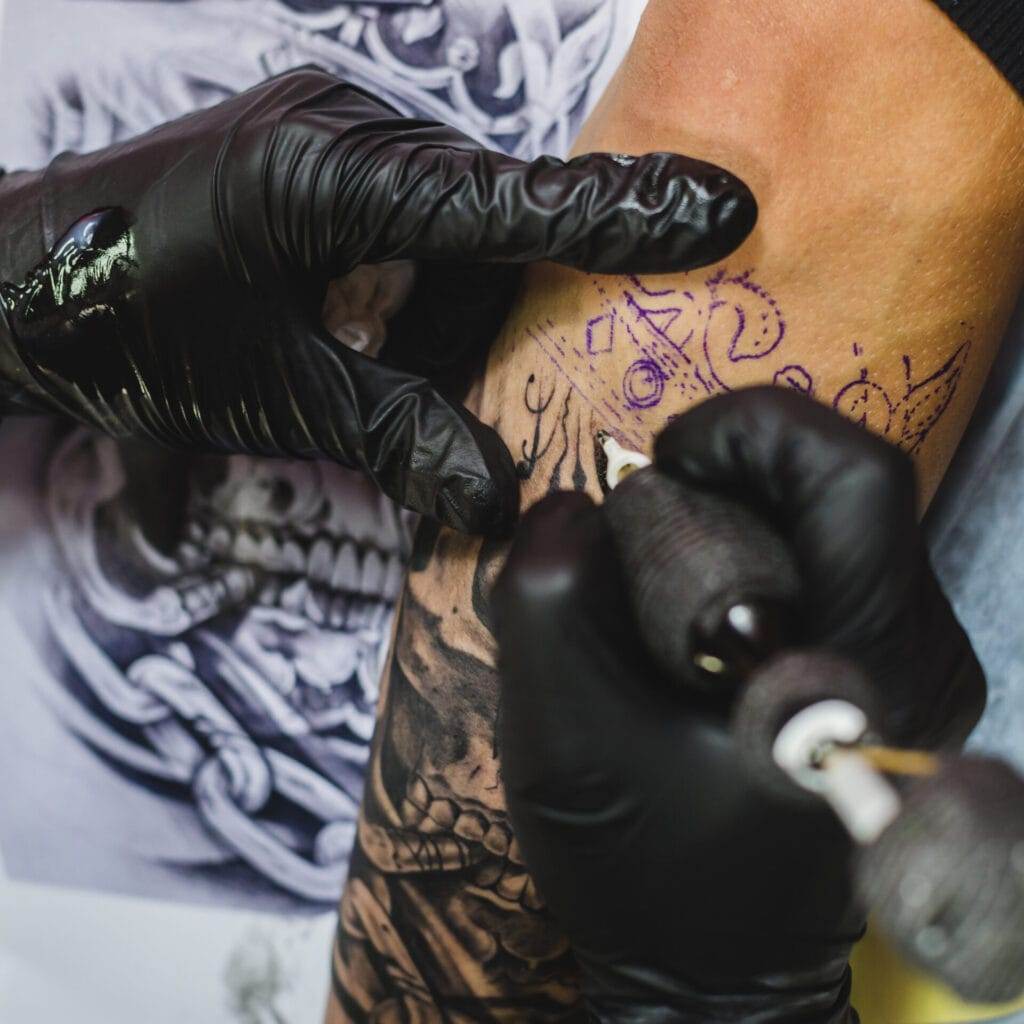
There are several techniques that tattoo artists can use to cover up an existing tattoo. One common technique is called “blackout,” where the artist uses black ink to completely cover the original tattoo. This technique works well for tattoos that are small or have faded over time.
Another technique is called “rework,” where the artist incorporates elements of the original tattoo into a new design. This can be done by adding shading, details, or additional elements that effectively conceal the original ink. Reworking a tattoo requires a skilled artist who can seamlessly blend the old and new elements together.
For tattoos that are larger or have more complex designs, artists may use a combination of techniques, such as adding new elements, incorporating negative space, or using color to distract from the original tattoo. The specific technique used will depend on the individual tattoo and the client’s preferences.
Color Theory: Matching the New Tattoo to Your Skin Tone
Color theory plays a crucial role in cover-up tattoos. The artist must carefully select colors that will effectively conceal the original tattoo and blend seamlessly with the client’s skin tone. Choosing the wrong colors can result in a cover-up that looks unnatural or fails to effectively hide the original ink.
When selecting colors for a cover-up tattoo, it’s important to consider factors such as the saturation, hue, and value of the ink. The artist may also take into account the undertones of the client’s skin and any existing pigmentation changes caused by the original tattoo. By using their knowledge of color theory, experienced artists can create a cover-up tattoo that looks natural and harmonious with the client’s skin tone.
Placement Matters: Choosing the Right Spot for Your Cover-Up
Choosing the right placement for a cover-up tattoo is just as important as selecting the design and colors. The placement should not only effectively conceal the original tattoo but also complement the client’s body shape and personal style. It’s important to consider factors such as visibility, symmetry, and how the new tattoo will interact with any existing tattoos.
The artist will work closely with the client to determine the best placement for their cover-up tattoo. They may suggest areas of the body that are less prone to stretching or fading over time, or areas where they can effectively incorporate elements of the original tattoo into the new design. Ultimately, the goal is to create a cover-up that not only hides the original ink but also enhances the client’s overall aesthetic.
Aftercare: Caring for Your New Tattoo
Aftercare is a crucial part of the tattoo cover-up process. Proper care and maintenance will ensure that the new tattoo heals properly and retains its vibrancy over time. The artist will provide specific aftercare instructions, but there are some general guidelines that apply to most cover-up tattoos.
It’s important to keep the tattoo clean and moisturized during the healing process. This typically involves washing the tattoo gently with mild soap and water, patting it dry with a clean towel, and applying a thin layer of tattoo-specific ointment or moisturizer. It’s also important to avoid exposing the tattoo to direct sunlight, swimming pools, or hot tubs during the healing process.
Following the artist’s aftercare instructions is essential for optimal healing and to minimize the risk of infection or complications. It’s also important to schedule any necessary touch-up appointments to ensure that the cover-up tattoo looks its best.
Tattoo Removal vs. Cover-Up: Pros and Cons
When deciding between tattoo removal and cover-up, there are several factors to consider. Both options have their pros and cons, and what works for one person may not work for another. It’s important to weigh these factors carefully before making a decision.
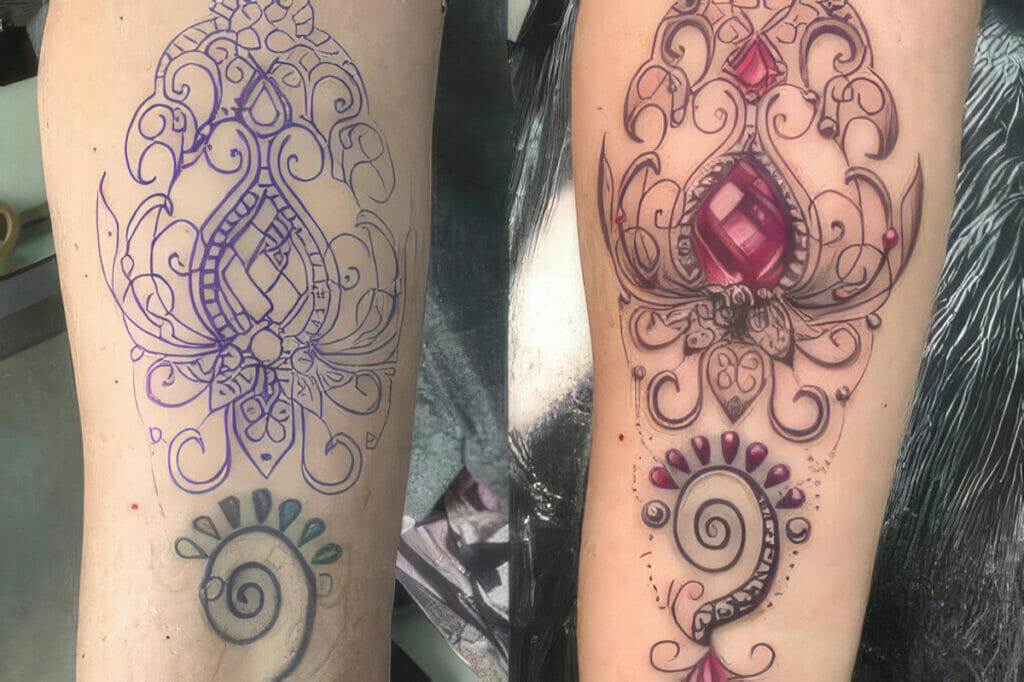
Tattoo removal offers the possibility of completely eliminating an unwanted tattoo. However, it can be a lengthy and expensive process, and there is no guarantee of complete removal or satisfactory results. Additionally, tattoo removal may leave behind scarring or pigmentation changes.
On the other hand, cover-up tattoos provide a more immediate solution for those looking to transform their inked canvas. With the right artist and design, it is possible to effectively conceal an existing tattoo and create a new design that aligns with one’s current preferences. Cover-up tattoos also offer more flexibility in terms of design options and can be a more cost-effective solution compared to tattoo removal.
Ultimately, the decision between tattoo removal and cover-up will depend on individual preferences, the specific tattoo, and the desired outcome. It’s important to consult with an experienced tattoo artist and weigh the pros and cons of each option before making a decision.
Frequently Asked Questions About Tattoo Cover-Up Services
1. How much does a tattoo cover-up cost?
The cost of a tattoo cover-up can vary depending on factors such as the size, complexity, and location of the original tattoo, as well as the design and colors chosen for the cover-up. It’s best to consult with an artist for an accurate cost estimate.
2. Can any tattoo be covered up?
In most cases, yes. However, there are some tattoos that may be more difficult to cover up due to factors such as size, color saturation, or scarring. An experienced artist will be able to assess the feasibility of covering up a specific tattoo during the consultation process.
3. Will the cover-up tattoo look natural?
With the right artist and design, a cover-up tattoo can look natural and seamlessly conceal the original ink. It’s important to choose an artist who has experience in cover-up work and can provide examples of their previous work.
4. How long does a cover-up tattoo take to heal?
The healing time for a cover-up tattoo is similar to that of a new tattoo. It typically takes about 2-4 weeks for the tattoo to heal completely, although individual healing times may vary.
5. Can I still get a cover-up if my original tattoo is very dark or colorful?
Yes, it is possible to cover up dark or colorful tattoos. However, it may require more sessions or a combination of techniques to effectively conceal the original ink. An experienced artist will be able to assess the feasibility of covering up a specific tattoo during the consultation process.
Embracing a New Look with Confidence
Tattoo cover-up services offer a solution for those looking to transform their inked canvas and feel more comfortable in their own skin. Whether it’s a change in taste, a desire to remove a reminder of the past, or the need to conform to professional standards, cover-up tattoos provide an opportunity to create a new design that aligns with one’s current preferences and lifestyle.
By working with an experienced tattoo artist, individuals can effectively conceal an existing tattoo and create a new design that looks natural and harmonious with their skin tone. The consultation process allows for clear communication between the artist and client, ensuring that the cover-up tattoo meets the client’s expectations.
Ultimately, tattoo cover-up services empower individuals to embrace a new look with confidence. By reclaiming control over their appearance, they can feel more comfortable in their own skin and project an image that aligns with their current preferences and lifestyle. Whether it’s a small touch-up or a complete transformation, tattoo cover-up services offer a solution for those looking to rewrite their personal narrative on their inked canvas.

